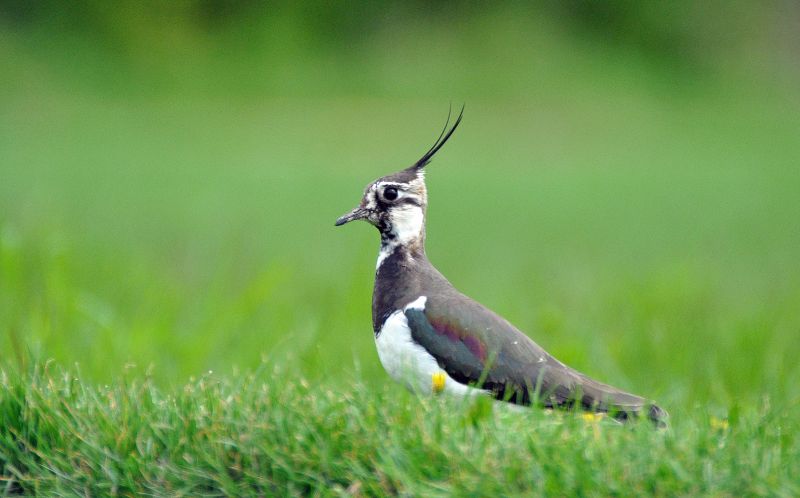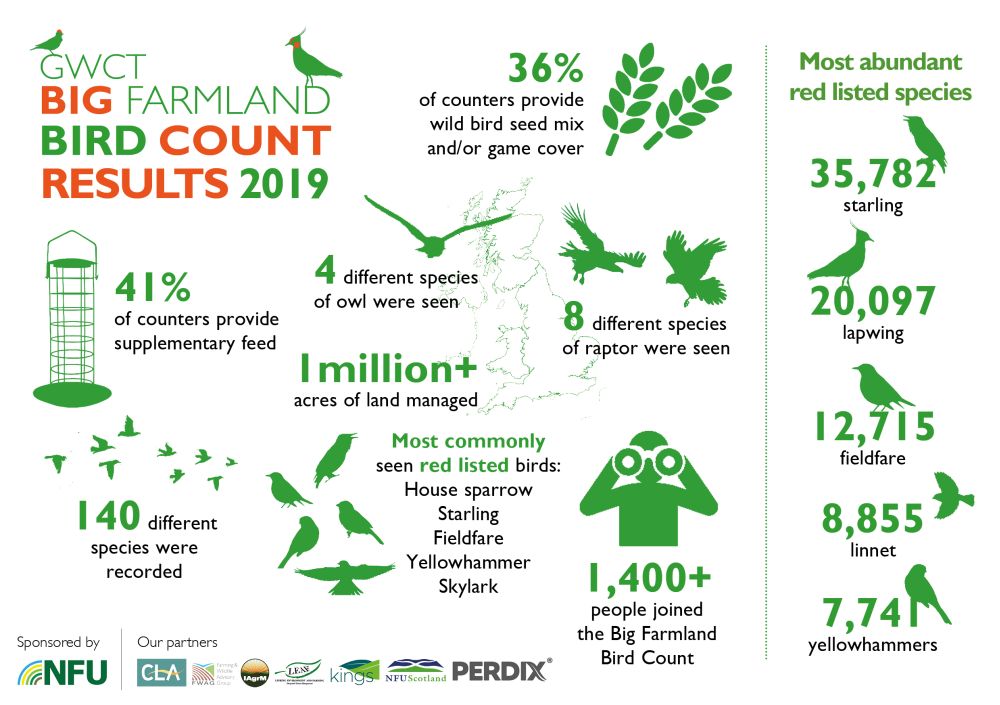
Results show that 1,400 farmers – a 40% increase on last year – recorded 140 species over 1 million acres in this year's Big Farmland Bird Count.
A total of 30 red-listed species were recorded in the initiative's sixth year, with 5 appearing in the most-commonly seen species list.
These included fieldfares, starlings, house sparrows, yellowhammers and song thrushes, with the first four seen by over 30% of the farms taking part.
The five most abundant birds seen were woodpigeons, starlings, lapwings, black-headed gulls and rooks. A total of 148,661 were found, making up nearly 50% of the total number of birds recorded.
The Game & Wildlife Conservation Trust (GWCT) initiative took place between February 8th to 17th.
It helps farmers and landowners identify the farmland birds that are flourishing due to good conservation methods and ones in need of most support.
“It’s brilliant to see an increase in the number of participants,” said Jim Egan, who has co-ordinated the count for the past six years.
“I’m particularly pleased by the way the facilitation funds and farmer clusters have worked together to embrace this across a landscape scale.
“The fact that in, many cases, farmers and birders have worked together and inspired each other shows the power of sharing our skills and knowledge.”
The average farm size of those taking part was 739 acres, with 66% growing arable crops, 52% having beef or sheep, and 13% growing field vegetables.

There were also dairy farms, horticulture units, poultry producers and pig producers submitting counts.
The survey areas included important environmental features such as hedges, woodland ponds, grass margins, ditches and trees.
Minette Batters, President of the NFU, said it is 'often unappreciated' that many farmers provide habitats and additional feeding for birds during the winter months.
“The Big Farmland Bird Count is a fantastic way for farmers to record the birdlife found on their farms. I’d like to thank all those farmers who braved Storm Erik on launch day to carry out the count despite driving rain and strong winds.
She added: “It’s great that many different threatened species were recorded this year such as lapwing and fieldfare that I saw on my own farm.”
Farmers from every county in England took part and there were also responses from Northern Ireland, Scotland, Wales and Austria.
Norfolk had by far the most returns, with 145 farmers completing the survey. This was followed by Suffolk with 92, Herefordshire with 63 and Hampshire with 60.
The most-commonly seen species were blackbirds, woodpigeons, blue tits, robins and pheasants.
The count offers a simple means of recording the effect of any conservation work currently being instigated by farmers and gamekeepers on their land, such as scatter feeding birds through winter or growing crops specifically to provide seed for birds.
